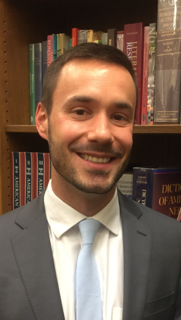 One of the most enduring insights of literary study is that narratives shape not only how we interpret the world, but also how we inhabit it. As students and scholars of language, we spend our time parsing stories—learning to recognize the ways they are constructed and composed, understanding the assumptions they make, considering their implications. This attention to narrative has never felt more essential than it does now, as we navigate a cultural and political landscape increasingly defined by irreconcilable realities.
One of the most enduring insights of literary study is that narratives shape not only how we interpret the world, but also how we inhabit it. As students and scholars of language, we spend our time parsing stories—learning to recognize the ways they are constructed and composed, understanding the assumptions they make, considering their implications. This attention to narrative has never felt more essential than it does now, as we navigate a cultural and political landscape increasingly defined by irreconcilable realities.
It has become all too common to say that Americans do not experience a shared common reality (and to wonder if we ever actually did). In our silos of social media platforms, networks, and websites devoted to particular viewpoints, or even across otherwise communal spaces like workplaces, we seem to be living simultaneously in distinct realities, each with their own truths and understandings. It’s less a question of whether the glass appears half full or half empty than whether there even is a glass or if it has water in it at all. Even shared externally driven experiences—like a pandemic or a natural disaster—are filtered through distinct interpretive frameworks, leading to strikingly different conclusions.
This isn’t an entirely new phenomenon, of course. Competing perspectives have always existed, and American history is rich with examples of disagreement, protest, and ideological division. What feels different now is the structure and speed of the information environment in which these narratives are produced and consumed. In the past, we believed we had something like a common reference point, even when opinions diverged. The world and the narratives that once shaped it seem to have vanished.
College is a space where students confront head-on this same dynamic: the growing difficulty of encountering, much less accepting, alternative points of view. Some commentators have compared this moment to the fragmentation characteristic of modernist literature—think of The Waste Land, Lord Jim, or Mrs Dalloway—in which multiple voices speak past each other, each grounded in its own worldview, each offering its own version of reality. But whereas modernist fragmentation was often a self-conscious artistic response to crisis, our current divergence is lived in real time, often without reflection or awareness.
As an English department, we approach this cultural moment not with prescriptions but with questions. How do people come to believe the stories they believe? What makes a narrative compelling, persuasive, or resonant? How does language—tone, metaphor, structure—shape our emotional responses and moral judgments? What happens when those responses clash? These are questions our students take up in literature classes, in creative writing workshops, and in courses on film, media, digital landscapes, and much more. They are learning not only to identify the craft behind the narrative, but also to see how narrative functions in the broader public sphere. We consider how marginalized voices have long challenged dominant narratives, and how literature has served as both a site of resistance and a tool of persuasion. These discussions remind us that narrative conflict is not inherently destructive; it can be generative, leading to deeper understanding, new alliances, and genuine change.
Still, the current proliferation of divergent realities raises urgent concerns about trust, communication, and the very possibility of consensus. Here again, English offers tools: a habit of critical reading, an ear for nuance, a recognition that meaning is often provisional and contested. These tools do not eliminate disagreement, but they help us navigate it with humility and curiosity. Whether through fiction, poetry, argument, or essay, we encourage our students to imagine their way into perspectives that are not their own—not necessarily to adopt those views, but to understand their foundations. In a culture of competing truths, such imaginative empathy is not only an academic skill; it is a civic one. We look forward to hearing your stories, too—about how you see the world, what narratives guide you, and how your time with us has helped you read between the lines.
—Gayle Rogers
